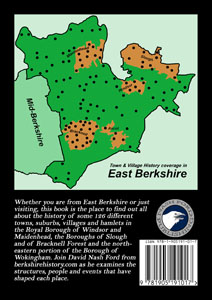 |
 |
||||||||
|
|
Remenham means Ravens’ Home, possibly because it was an area sacred to the chief Anglo-Saxon god, Woden, whose symbol was the raven. The village has been very small since most of the population was wiped out by plague in 1664. It is most famous for its associations with rowing and, since 1839, especially with the Henley Royal Regatta and the Leander and Remenham Clubs. It sits on the Berkshire side of the Thames just across from Henley and provides accommodation for spectators, judges and marshals during Regatta Week. The start of the course is at the Greek-style temple on Temple Island in Remenham. It was designed by James Wyatt in 1771 as a folly for Fawley Court, on the Henley side of the river. The old manor house stood near Remenham Farm, where parts of the moat remain. From the 1160s, it was the Thames Valley home of the De Montfort family from Beaudesert Castle and Coleshill Hall in Warwickshire. It was probably from Remenham that Robert de Montfort set out for Reading to fight and win a renowned trial by combat on an island in the Thames. The manor was given a deer park based on Remenham Wood by Peter de Montfort in 1248 and was later the refuge of Sir Edmund Montfort during the reigns of Kings Edward IV and Richard III. He had been a prominent Lancastrian during the Wars of the Roses and had been a good friend of Edward’s rival, King Henry VI, and therefore had all his manors except Remenham confiscated in 1474. The parish has a number of other fine country houses. Remenham Place was a preparatory school at the beginning of the 20th century and pupils included the ill-fated Antarctic explorer, Captain Oates. Culham Court (originally in Wargrave parish) stands along the Thames path just east of Aston. It has a delightful deer park with a public footpath right across it. The present house was built in 1770-1 for Richard Michell, a London lawyer. It was rented out to the party-loving 5th Duke of Marlborough for a while (when Marquess of Blandford) before he moved to Bill Hill in Hurst. When Michell’s son-in-law entertained King George III at Culham, he had hot bread brought specially by horse relay, wrapped in flannels, from his favourite bakery in London. The King knew the area well, for he grew up at the most prominent mansion in the parish, Park Place, although the present French Renaissance style building almost entirely dates from 1870. It was the chief country residence of the King’s father, Frederick, the Prince of Wales, during the 1740s. There are extant paintings of his children hunting in the park and it is said they liked to play under the ‘King’s Cedar’ there. The Henley murderess, Mary Blandy, is said to have frequently met with her lover in the park. She certainly fled to the safety of the Little Angel Inn in Remenham when pursued by the people of Henley after she had killed her father. In 1752, the year of her execution, the estate was purchased by Field-Marshal Henry Seymour Conway, a former Governor of Jersey. As a token of their appreciation for his service, the people of Jersey gave him a neolithic chambered tomb from the Mont de la Ville near St Helier. He had it re-erected at his Berkshire home as a romantic folly. He also brought stones from the ruins of Reading Abbey to build the Ragged Arch (or Conway’s Bridge) beneath the traffic lights on the Henley to Wargrave road and his Lombardy Poplars were the first to be planted in England. Conway’s daughter, the sculptress Anne Seymour Damer, is associated with Henley Bridge, where she designed the masks of the Thames and the Isis. Another extraordinary folly on the Park Place estate is the former spire of St Bride’s Church, Fleet Street, which stands alone in a field. It was brought there as a memorial to Queen Victoria’s accession to the Throne. Remenham’s own church dates from the 13th century but was almost entirely rebuilt in 1870. The apse is a rebuilding of a Norman chancel on the site. It houses fine Siennese iron gates presented by John Noble of Park Place in 1875. Read more history of
Remenham and other settlements in the parish in David Nash Ford's book, 'East Berkshire Town and Village
Histories'.
|
||||||||
| © Nash Ford Publishing 2008; Revised 2020. All Rights Reserved. | |||||||||



 Remenham
Remenham
